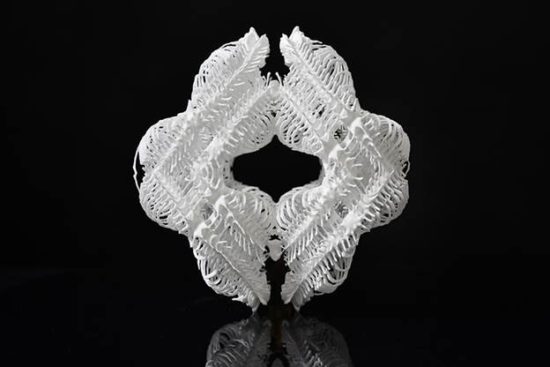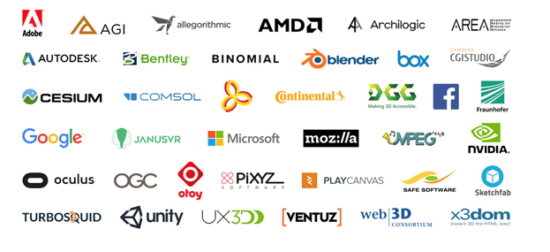The glTF format is on the brink of ubiquity, maybe.
The Khronos Organization is a consortium creating open interoperability standards to foster cross-platform development. Their roots are in OpenGL, so graphics will always hold a special place in the organization’s growing list of interests.
Khronos has recently announced a collaboration with the Smithsonian on the Open Access Initiative, which will open the floodgates to new content and easier content creation. First off, the Smithsonian is releasing 2.8 million 2D images and 3D models, which are going to make a wealth of new content available to artists, educators, students, and graphics professionals through the Creative Commons Zero (CC0) open source licensing option.

For the 3D content, the Smithsonian has adopted Khronos’ glTF format. Now, anyone can access 3D models from the Smithsonian collection and view them in a browser through WebGL, on their machines using Windows, PowerPoint, with third party viewers for Mac PCs and mobile devices. The Smithsonian has developed its own glTV pipeline and viewing tools, but with this agreement, the Smithsonian and Khronos will build more extensible toolset; so as improvements come to glTF, the Smithsonian will be able to take advantage of them. Khronos members have added extensions to glTF such as the Draco mesh compression developed by Google, which enables smaller file sizes, other extensions improve image quality such as support for the Clear Coat, OpenGL extension which was developed for the automotive industry to define the physical qualities of automotive paint. (Clear Coat was developed in 2002.)

Patrick Cozzi is the head of the glTF Working Group for Khronos and he is also the CEO of Cesium, builders of a platform for 3D terrain content. Its technology enables people to work with the huge amounts of data that are typical of geospatial workflows. Cozzi says he’s seen the development and adoption of glTF go through three phases as it makes its way out to wider use. At the introduction, glTF was developed to solve the problem of having a common viewer for 3D content. In its next phase, the large players entered the fray to expand the use of 3D content. He sees glTF breaking out into more mainstream use with Khronos’ response to demands from business and industry for a common 3D format for visualization and content exchange. In April 2019, the 3D Commerce Initiative was founded and it has become a Working Group within Khronos.
One of the most important aspects of Khronos’ work as the keeper of open standards is in validation. It ensures that content creation and viewing tools used for creating and distributing are implying the correct format on input and output.
To see Smithsonian content and glTF in action, have a look at the U.S. Space Shuttle in action and on the runway on Cesium’s site.
What do we think?
The Smithsonian, the world’s largest museum complex, has been amassing digital data since the dawn of the digital era. They’ve been scanning, photographing, rebuilding, and reimaging content from their collections. It is the modern Library of Alexandria and investment digitization and glTF is an attempt to preserve the library’s contents from the fate that has befallen the world’s libraries and museums in history and in modern times. And unlike other preserves of content, the Smithsonian is not using a media (such as tape, or discs) that have limited capacity and for which a reader may not be available. Instead, the Smithsonian is using code which can be transported to the latest storage device, and translated to newer file formats if ever needed.
The content that the Smithsonian is releasing to the world will further expand the amount of free content available to artists and hobbyists. It will also spread the common use of a file format and thus extend its useful lifetime.
Khronos’ ongoing development of the glTF format will also expand the use of 3D and especially AR, VR, and XR, thanks to the establishment of the 3D Commerce initiative. More 3D is going to get in front of more people.
Some of this might sound familiar since the industry has been working on the distribution of 3D content for about two decades. It’s a reminder that even if it’s something everyone wants, it still might not be easy to see that everyone gets it. But the other half of the proposition is that it’s just been a long road. Methods and technologies are coming together and being refined. Sometimes, most of the time, it takes longer than anyone thinks.
On a related side note, Apple had adopted USDZ format developed by Pixar for its Universal Scene Description (USD). Khronos member NexTech AR supports USDZ as well. The USDZ format includes a Quick Look feature on Macs allowing users to look at a file without running an application. They can see a USDZ file using the spacebar.
Khronos president, Neil Trevett says, “we are seeing that the primary format for investing in toolchains, viewers, guidelines, repositories of content such as Smithsonian, etc., is glTF. This is because it is an open standard that everyone can influence and no one company can change/discontinue the normal advantages of any effective, truly open standard under multi-company governance.”
Trevett says the most practical approach to working between the two formats will be to use translators to “hop over the fence to (or out of) Apple’s walled garden.” And, he notes there are translators being developed including some by Apple.
I noticed too, as I was downloading glTF content that there aren’t as many viewers for the Mac PCs as there are for Windows machines. There are viewers for Apple’s mobile devices.
The points of disconnect are familiar but the path of glTF seems clear.
Jon Peddie said, “This is one of the most exciting things to happen in the open community in some time. The huge library of 3D models of things, from antique rocking chairs to space equipment, will change forever the amateur and professional content creation ecosystem, and the results will foster a new wave of videos and movies, games, buildings, bridges, and extrapolations to fantastic things such as Karle is doing. What a gift to the world.”





